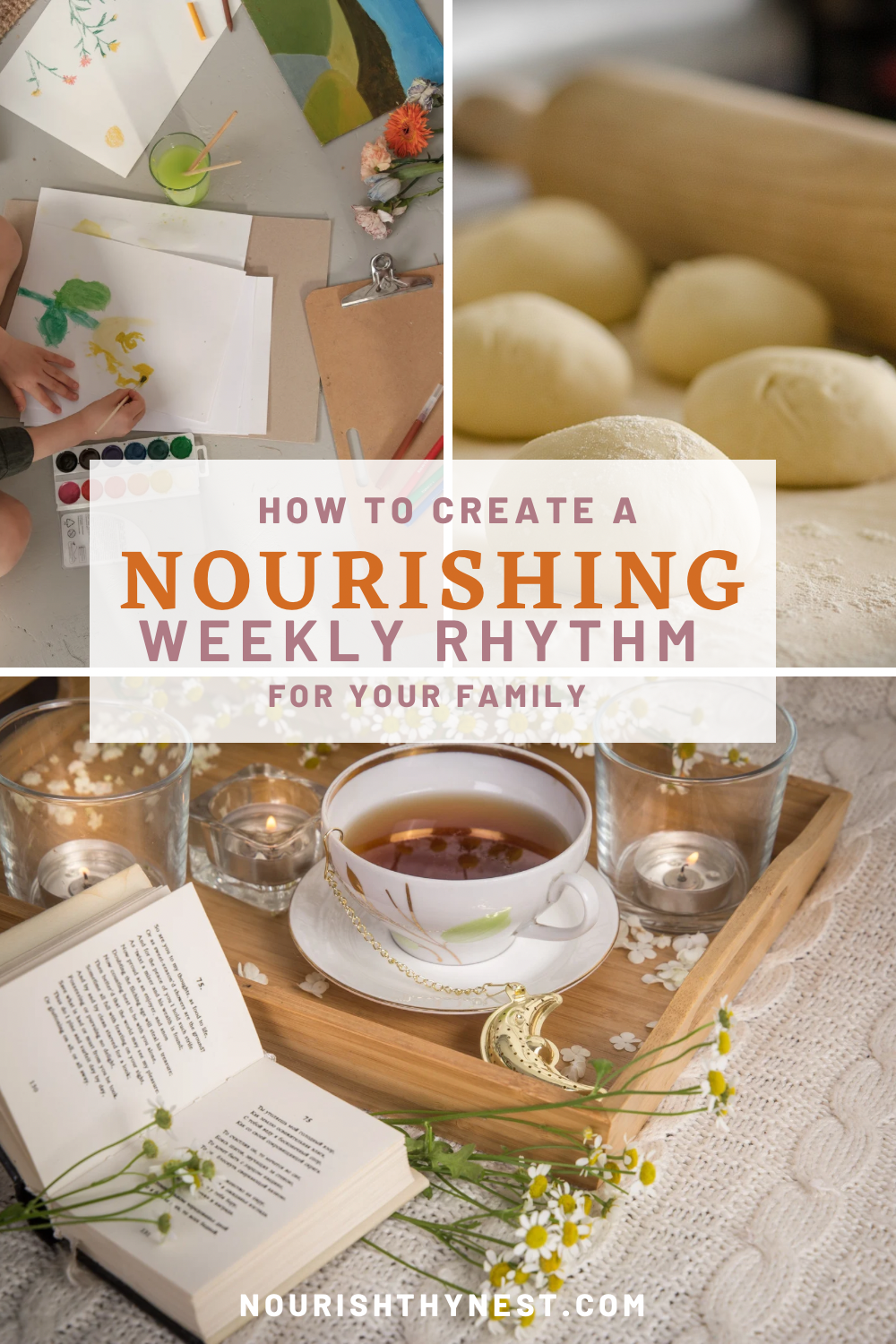
This blog is reader supported, and some of the links in this post are affiliate links, meaning, at no additional cost to you, I will earn a commission if you click through and make a purchase. As an Amazon Associate I earn from qualifying purchases
In a recent post we discussed how nourishing it can be for a family to follow a Seasonal Rhythm. In this post we are going to go a little further, and talk about creating a Daily Rhythm which exists within the container of the Seasonal Rhythm.
Much like a Seasonal Rhythm, a Daily Rhythm provides anchor points for our experience of life.
Excerpt from my Seasonal Rhythm post:
“An anchor point is like the beating of a drum, where each time you feel the beat of it, you experience the rhythm’s anchor point.
It grounds you in the music.
As that beat repeats, over and over again, you come to expect and anticipate the next beat of the drum.
Instead of the beat of a drum creating the anchor points, you create them by establishing daily, weekly, and seasonal anchor points that your family comes to know and expect.
In the Waldorf pedagogy that our family life is largely inspired by, rhythm creates the foundation of a child’s life experience from an early age.
Storytelling, art, and music, as well as the art of caring for home and hearth are woven into the child’s daily rhythm within the container of a seasonal rhythm.
The container of these rhythms are what create a sense of harmony within your home that in turn allow your children to flourish.”
We can get an idea of what this means by doing a little breathing exercise:
Start by breathing in and breathing out, slowly and evenly.
Breathe in…
Breath out..
In…and out.
This is rhythm.
This is the feeling we want to nourish within ourselves and within our home.
Excerpt from my ‘Seasonal Rhythm’ post:
“Children thrive when they are nourished by rhythm, when they can anticipate and know what to expect both in their daily lives and in the yearly wheel of life.
It allows them to rest in knowing that their world is a safe and nourishing place.
When children experience the deep sense of safety and security that rhythm brings their brains can open to their natural curiosity, imagination, and learning.
When parents create rhythm for themselves and their family it can help reduce stress levels, and build connection between family members when everyone participates in the rhythm together.”
Much like the rhythm of breathing, in a Daily Rhythm we want to alternate quiet “Breathing In” activities with more energetic “Breathing Out” activities.
For example, reading is a quiet “Breathing In” activity.
Running is an active “Breathing Out” activity.
If we structure our day within this framework we create the same nourishing rhythm as breathing within our home.
In our home this looks like:
Morning:
- Breakfast & take our 12 year old to her middle school program (Breathing Out)
- When we get home: Morning story-time for our homeschooling kinder (Breathing In)
- Morning chores & Circle Time, which includes movement/exercise (Breathing Out)
- Daily learning activity: Form Drawing, Handwork/Crafting, Beeswax Modeling, or Painting (Breathing In)
Mid-Day – Afternoon:
- Prepare Lunch (Breathing Out)
- Eat Lunch (Breathing In)
- Free Play Time (outside if weather allows) then pick older child up from school (Breathing Out)
- Snack and rest (Breathing In)
- Ballet Class on some days, or free play on other days (Breathing Out)
Evening:
- Suppertime (Breathing In)
- Evening clean-up and free play time (Breathing Out)
- Get ready for bed, and bedtime read-aloud, and sleep (Breathing In)
However this is NOT a rigid schedule.
While there are some things that happen at specific times (like dropping our middle-schooler off in the morning, and ballet classes), the rest don’t have an assigned time.
They are simply activities we do each day, in about the same order so that everyone knows what to expect.
It is ordered, but feels very fluid because nothing need happen at a set time, so there is room for your children to experience and explore their own natural curiosity and creativity.
And again, children thrive when they can rest in the feeling of nourishment and safety that rhythm provides.
Please keep in mind that there will be “off days”, like when the kids get sick, or you have to make a last minute appointment, or the laundry pile needs to be dealt with more than anything else on a given day (or is that only in my house??).
And some days your kids have their own ideas about what they want to do that don’t really line up with the rhythm you created, and sometimes you just need to follow their lead.
And that is ok!
This is just a guide to follow, and shouldn’t be something to stress or worry about. I’d estimate we actually do our rhythm the way it is on paper about 60% of the time. Possibly less.
And our family still connects to that rhythm in spite of it getting derailed nearly half the time.
So please give yourself and your family the space to be gentle about your rhythm and be flexible and fluid wherever you need to.
We all have enough stress in our modern lives…no need to create any more, right?
Here are some simple steps you can take to create a Daily Rhythm that works for your family:
- Grab a sheet of paper and list out all the activities that must happen at a specific time each week
- List out the other daily chores, lessons, and activities that you would like to include in your week
- Decide which activities are ‘Breathing In’ activities, and which are ‘Breathing Out’ activities
- Arrange them by alternating the ‘Breathing In’ activities with the ‘Breathing Out’ activities
So simple to do, with benefits for your whole family that last a lifetime.
~xo
Did you create a Daily Rhythm for your family? Share your experience in the comments!


2 thoughts on “How to Create a Nourishing Daily Rhythm for your family”